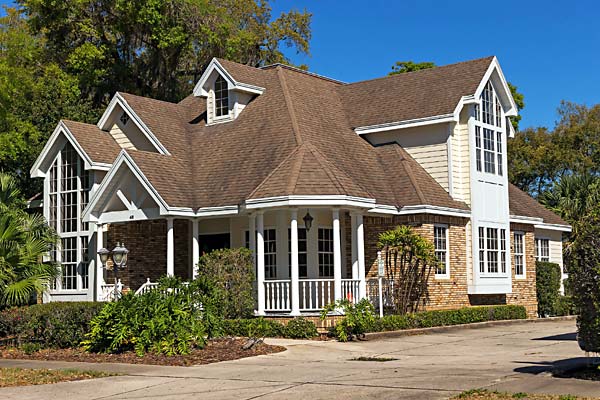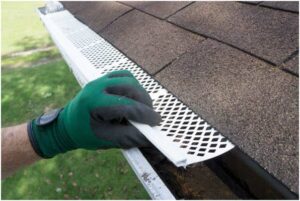Storms can wreak havoc on your home. From breaking your windows to damaging your landscape, such extreme weather conditions can do a lot of damage to your property. This is especially applicable for those of you living in storm-prone areas. Louisville gets several storms each year, like this one that came through in April. So repairing your roof after a storm is something local homeowners should understand.

Repairing Your Roof After a Storm: 5 Things You Should Know
In the US, according to the Vermont Business Magazine, tornadoes cost an average of $2.5 million in property damages per storm. In most cases, when it comes to such property damages, it’s your roof that bears the brunt. When the storm clouds clear and the damage becomes evident, it’s essential to act swiftly and knowledgeably to repair your roof.
That being said, let’s explore some of the most crucial things you should know when it comes to repairing your roof after a storm.
#1 Assess the Damage Thoroughly
Before you dive into any repair work, it’s imperative to assess the damage thoroughly. Forbes reports that roof repairs in the US, on average, cost between $150 and $7,000. Looking closely at your damages will help you realize how much you might have to spend on roof repairs. Besides, a hasty evaluation of the damages may lead to overlooking critical issues, which could result in costly consequences down the line.
Inside your home, check for signs of water leaks or moisture damage on your ceilings, walls, and attic. You should also look for any sort of water stains or sagging drywall. These indicate that your roof may have sustained damage and is allowing water to infiltrate your home.
On the exterior, examine your roof from the ground using binoculars if necessary. Look for missing or damaged shingles, torn flashing, and dented or bent gutters. Don’t forget to inspect your chimney and any vent pipes for damage as well.
#2 Document the Damage
Once you’ve thoroughly assessed the storm damage, it’s essential to document it. Visual records, like photographs and videos, will be valuable when dealing with insurance claims and contractors. Include close-up shots of damaged shingles, flashing, and any areas where water is infiltrating your home.
You’ll also want to create a detailed written description of the damage. This will include the date of the storm and any temporary repairs you’ve made to prevent further damage.
Once you have all the documents ready, go ahead and file your insurance claim. As Fox Business advises, you shouldn’t wait too long to file the claim. The sooner you file the claim, the sooner you can get the roof-repairing process started.
#3 Temporary Repairs are Crucial
You must wait a little for the insurance claim to be processed and the permanent repairs to be scheduled. In the meantime, repairing your roof after a storm, even if only temporarily, is crucial to preventing further damage.
Temporary repairs can include covering damaged areas with tarps or plastic sheets to prevent water infiltration. You may also need to seal any visible leaks or secure loose shingles.
Remember that temporary repairs are not a long-term solution, but they can help protect your home until permanent repairs can be made. Document any temporary repairs you make and save receipts for materials purchased, as these costs may be reimbursable through your insurance claim.
#4 Choose the Right Roofing Contractor
To get all the complex roof repairs done, you’ll, of course, need a roofing contractor. You mustn’t hesitate to hire the first contractor you come across. Instead, do your research and vet all the potential contractors. At the end of it all, make sure you choose a reputable and, more importantly, qualified professional.
Hurricane Hilary recently caused havoc across the US, especially in Southern California, Nevada, and Mexico. For San Diego locals, professional roofing contractors like Peak Builders & Roofers of San Diego were there to help their clients quickly repair damaged roofs.
With these professional roofers’ help, locals could repair and replace their roofs as necessary. Furthermore, the roofing contractors also helped their clients reinforce the roofs so that future storms couldn’t cause too much damage to them.
#5 Long-Term Solutions and Preventive Measures
While repairing your damaged roof is essential, it’s also an opportunity to consider long-term preventive measures to protect your home from future storms.
Start by strengthening the weak points of your roof. These include the flashing around chimneys and vents to prevent future leaks. Also, implement a regular roof maintenance schedule, including inspections, gutter cleaning, and shingle replacement as needed. If your roof is aging or has been repeatedly damaged, it may be time to consider a roof replacement with more durable materials.
On top of all that, consider developing a storm preparedness plan for your home. Such a plan may include installing storm shutters, reinforcing the garage door, and so on.
Conclusion
That does it for this post. The next time your roof is damaged in a storm, don’t hesitate to go through and act on these tips. This will help you get the repairs done with little to no difficulty and prepare your roof for future storms.



